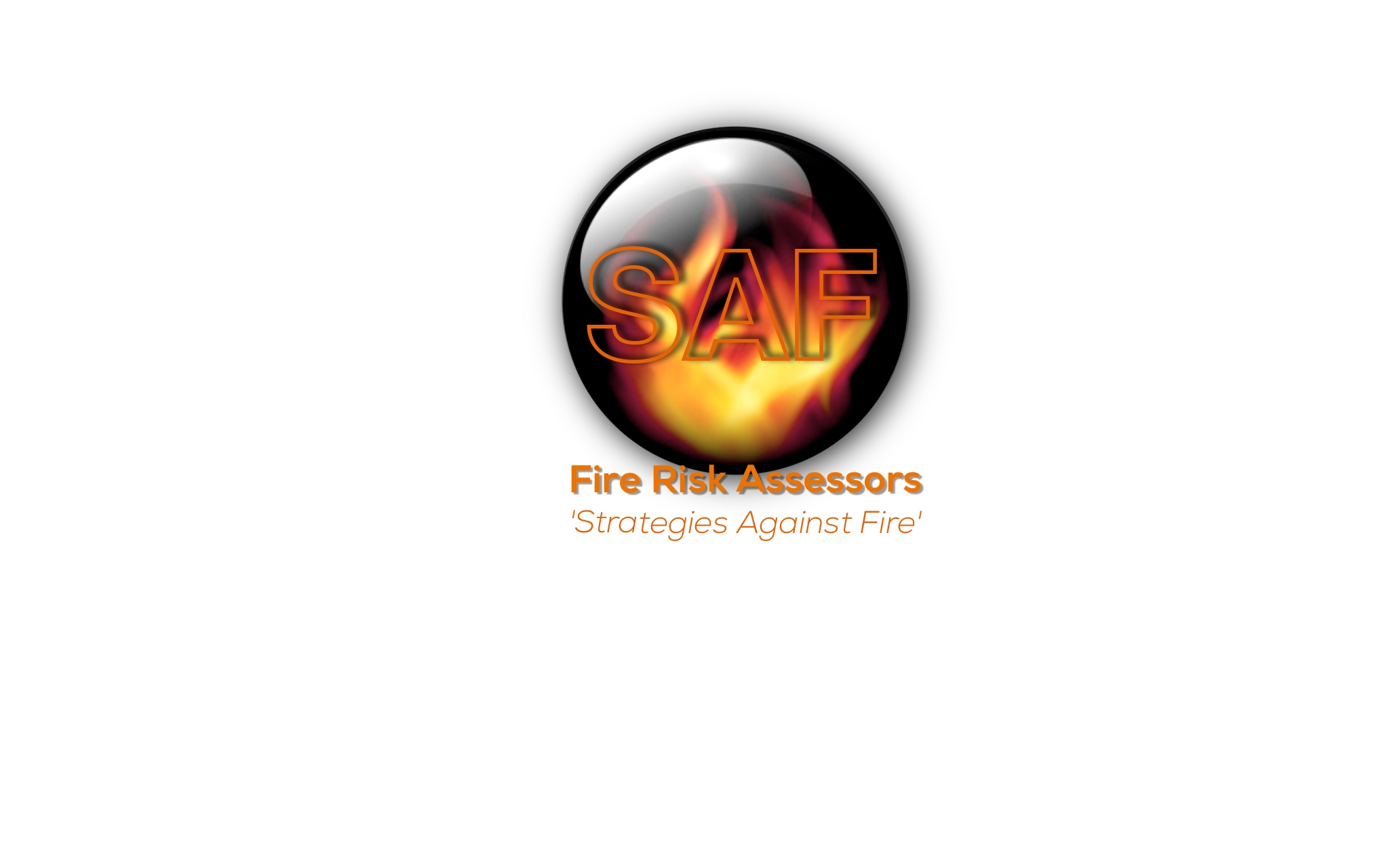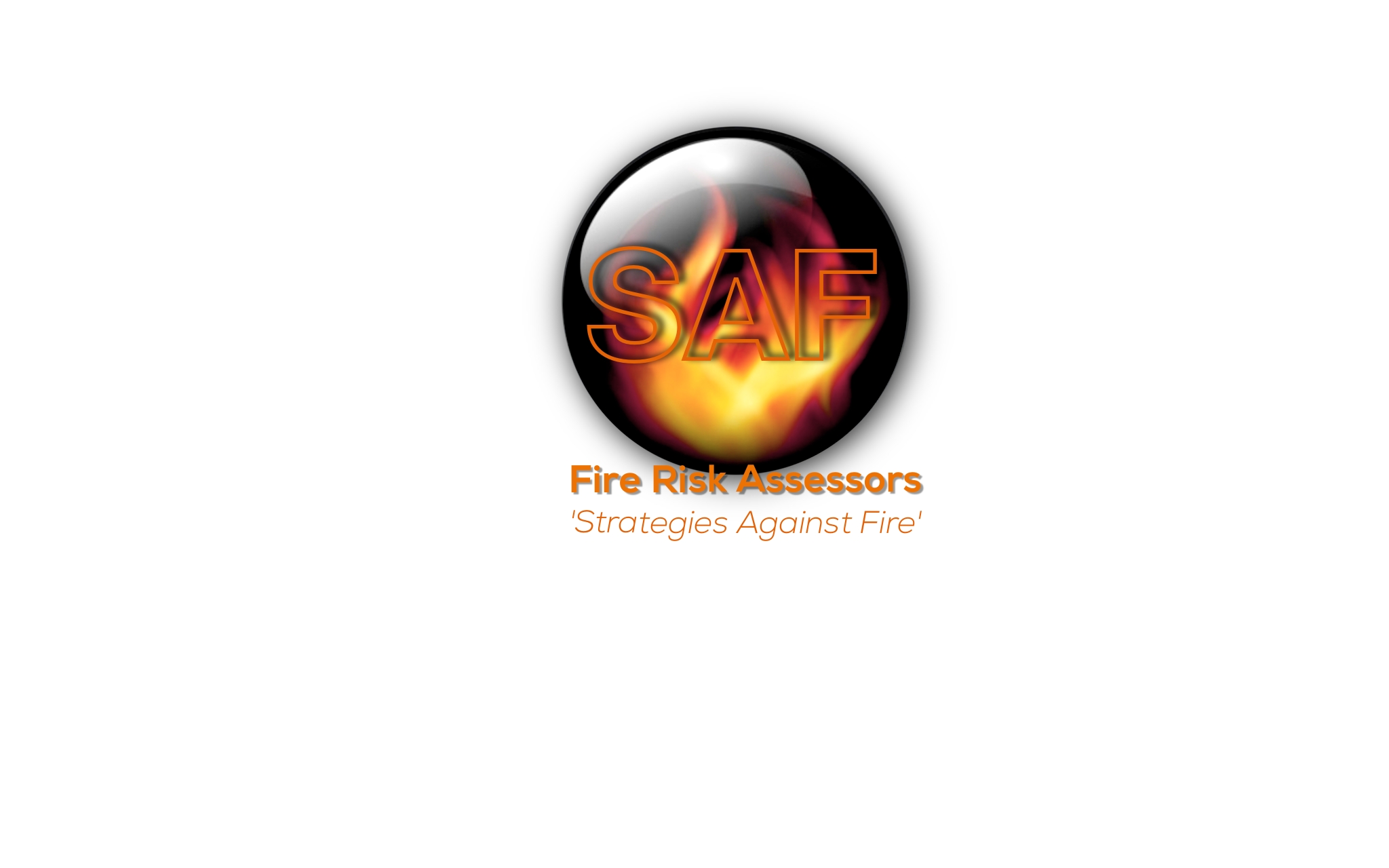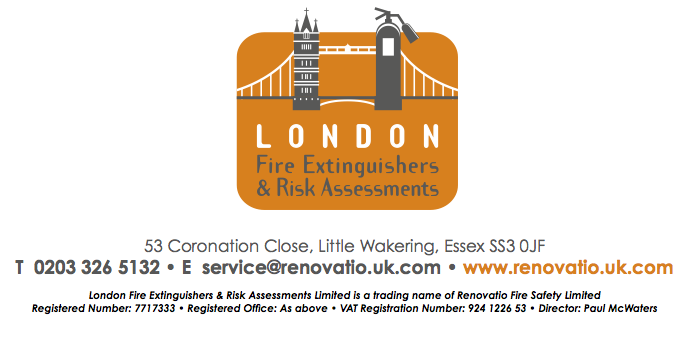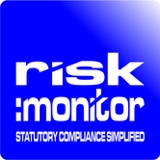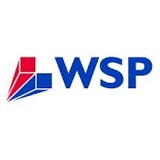Title Page
-
Responsible Person (e.g. employer) or Person Having Control of the Premises
-
Address of Premises
-
Client representative:
-
Assessor:
-
Assessors Signature:
-
Date of fire Risk Assessment
-
Date of Previous Fire Risk Assessment
-
Date for Fire Safety Specialist Review
-
Unless otherwise stated , this Fire Risk Assessment is primarily intended to meet legislative requirements based on Fire Safety (England) Regulations 2022, which are focused on Fire Safety in High Rise Buildings. Although there may be incidental benefits in reducing the damage and extent of a fire , the assessment is not primarily concerned with property protection or maintaining business continuity.
The submission of this report constitutes neither a warranty of future results by Safety-Reports nor an assurance against risk . The report represents only the best judgement of the consultant involved in its preparation , and is based , in part, on information provided by others . No liability whatsoever is accepted for the accuracy of such information. -
Safety-Reports Ltd
POB75000
London
NW11 1PG
Tel: 020 3746 5211
Mob: 07442 505 910
2. Important Information - Regulatory Reform (Fire Safety) Order<br>
-
This fire risk assessment has been carried out on your behalf , being the Responsible Person , as defined in Article 3 of the Regulatory Reform (Fire Safety) Order 2005 and the Fire Safety (England) Regulations 2022 under Article 24 of the Regulatory Reform (Fire Safety ) Order 2005 (e.g. as an employer), and/or being the person having control , to any extent, of the premises (as occupier or otherwise ). It is intended to assist you in compliance with Article 9 of the Fire Safety Order, which requires that a risk assessment be carried out.
-
It is important that you study this fire risk assessment and understand its contents . The fire risk assessment includes an Action Plan, which sets out the measures it is considered necessary for you to take to satisfy the requirements of the Fire Safety Order and to protect relevant persons (as defined in the Order) from fire. Relevant persons are primarily everyone who is, or may be, lawfully in the building, but include certain persons in the vicinity of the building. It is particularly important that you study the Action Plan. If any recommendation in the Action Plan is unclear you should request
further advice. -
The Fire Safety Order requires that you give effect to arrangements for the effective planning , organization , control, monitoring and review of the preventive and protective measures . These are the measures that have been identified in the risk assessment as the general fire precautions you need to take to comply with the Fire Safety Order.
-
You must record the above arrangements if:
a) You employ five or more employees in your undertaking (regardless of where they are employed);
b) A licence or registration under other legislation is in force; or
c) An alterations notice is in force requiring a record to be kept -
The Fire Safety Order also requires that you appoint one or more competent persons to assist you in undertaking the general fire precautions described above . Where there is a competent person in your employment , you must, under Article 18(8) of the Fire Safety Order, appoint that person in preference to a competent person not in your employment
-
This fire risk assessment has considered dangerous substances that are used or stored in your premises, only to the extent necessary to determine the adequacy of the general fire precautions (as defined in Article 4 of the Fire Safety Order 2005 ) and to advise you accordingly . If dangerous substances are used or stored in your premises , you should ensure that a risk assessment of the relevant work activities has been carried out to enable you to comply with the Dangerous Substances and Explosive Atmospheres Regulations 2002 . This fire risk assessment does not consider special, technical or organizational measures that are required to be taken or observed in connection with the use or storage of any dangerous substance.
-
More generally , this fire risk assessment forms only a foundation for management of fire safety in your premises and compliance with the Fire Safety Order . It is strongly recommended that you obtain a copy of the Fire Safety Regulations 2022 if you do not already have ready access to a copy.
It may be obtained from the Stationery Office, but can be freely downloaded from the Internet at: -
www.gov.uk/governmentpublications/fire-safety-england-regulations-2022
3. Limitations and Assumptions
-
The Fire Risk Assessment and report is based upon a visual inspection of the property only on the following terms, delimited and defined thereby as follows: No destructive or intrusive investigation of the building has been carried out, we have not removed or moved carpets and floor coverings, furniture and contents, floorboards, ducting, panelling, fixtures and fittings and the like and no wall plaster or finishes have been disturbed.
-
In making the Fire Risk Assessment, it is generally assumed that the building and its use are in accordance with valid Building Regulation Approval to the full satisfaction of the local authority and that there are no outstanding statutory notices in connection with the premises. Where there is reason to doubt the validity of this assumption, this report will make comment to that effect
-
Except where the contrary is stated parts of the interior and exterior of the building that are covered, unexposed or inaccessible have not been inspected and are assumed to be in sound and in good repair, the report does not purport to express an opinion about or to advise upon the condition of the uninspected parts and should not be taken as making any implied representation or statement about such parts.
-
The Fire Risk Assessment did not involve the use of any mechanical access plant or ladders to inspect at close quarters the parts of the building above ground floor level.
-
We have not assessed areas that are hidden from our view, inaccessible, unavailable, or built in to the structure or finishes of the building. We are therefore unable to confirm that these areas of the building are free of defects.
-
We are not responsible for the examination and/or testing of the fire alarm, electrical lighting, heating, plumbing, drainage installations, or the associated ancillary major and minor components.
-
General comment made regarding these installations shall not imply or confirm that any examination or testing whatsoever has been carried out. We are therefore unable to confirm that these installations are free of defects
4. General Information
4.0 The Premises
-
Number of floors in building/premises:
-
Approximate floor area:
-
Is this a High Rise Building of at least 18M (7 storeys)
-
Is this a building of 11M height (5 storeys or more):
-
Number of floors from Ground Level:
-
Number of floors below Ground Level:
Details of Construction
-
Grade Listed:
-
Approximate year of construction:
-
Frame Construction:
-
Exterior Materials:
-
Roof:
-
Doors:
-
Stairs:
-
Walls:
-
Windows:
-
Floors:
-
Other Relevant Facts
-
Major use(s) of the building/premises:
4.1 The Occupants
-
Approximate maximum number in the building/premises at any one time?
-
Associated times/hours of occupation?
4.2 Occupants Especially at Risk from Fire
-
Sleeping occupants
-
Disabled employees
-
Occupants in remote areas and lone workers:
-
Young persons
-
Others
4.3 FIRE LOSS EXPERIENCE
-
Brief details including date, cause and action taken:
4.4 OTHER RELEVANT INFORMATION
-
Any other pertinent information to assist the fire risk assessment process:
4.5 RELEVANT FIRE SAFETY LEGISLATION
-
6.1. The following fire safety legislation applies to these premises:
-
6.2. The above legislation is enforced by
-
Legislation that makes significant requirements for fire precautions in these premises:
- The Housing Act 2004
- Approved Document B
- The Education (School) Premises Regulations 1999
- Dangerous Substances and Explosive Atmospheres Regulations 2002
- Regulatory Reform (Fire Safety) Order 2005 in the Fire Safety (England) Regulations 2022
- Any Other:
-
The legislation referred to above is enforced by:
4.6
-
Have we kept hard copies of the building's floor plans and a single Orientation Plan of the building in the Premises Information Box?
-
Since the last Fire Risk Assessment has there been any substantial changes to the building or a change of use?
-
Did the building provide an Electronic Building Plan to the local Fire Rescue Service?
-
Observation
5. Fire Hazards and Their Elimination or Control
5.0 Electrical Sources of Ignition
-
Have reasonable measures been taken to prevent fires of electrical
-
origin?
-
More Specifically:
-
Fixed installation periodically inspected and tested/Electrical Installation
-
Condition Report?
-
Portable appliance testing carried out?
-
Any evidence of overloaded sockets?
-
Coiled extension leads in use?
-
Suitable policy regarding the use of personal electrical appliances?
-
Suitable limitation of trailing leads and adapters?
-
Observations:
-
Comments requiring action
-
Comment
-
Recommendation
-
Criticality
-
Pictorial Evidence
5.1 Smoking
-
Have reasonable measures been taken to prevent fires as a result of
-
smoking?
-
More Specifically:
-
No smoking signage in place?
-
Suitable arrangements for those who wish to smoke?
-
Smoking policy appeared to be observed at time of inspection?
-
Observations:
-
Comments requiring action
-
Comment
-
Recommendation
-
Criticality
-
Pictorial Evidence
5.2 Arson
-
9.1. Does basic security against arson by outsiders appear reasonable?
-
9.2. Is there an absence of unnecessary fire load in close proximity to the premises or available for ignition by outsiders
-
Is there a bin room/store situated in the block?
-
Is the bin room/store kept locked to prevent unauthorised access?
-
Observations
-
Comments requiring action
-
Comment
-
Recommendation
-
Criticality
-
Pictorial Evidence
5.3 Portable Heaters and Heating and Ventilation Installations
-
Is the use of portable heaters avoided as far as practicable?
-
If portable heaters are used, is the use of the more hazardous type (e.g. radiant bar or LPG appliances) avoided?
-
If portable heaters are used, are suitable measures taken to minimise the hazard of ignition of combustible materials?
-
Are fixed heating and ventilation installations subject to regular maintenance?
-
Observations
-
Comments requiring action
-
Comment
-
Recommendation
-
Criticality
-
Pictorial Evidence
5.4 Cooking
-
Reasonable measures taken to prevent fires as a result of cooking?
-
More Specifically:
-
Filters cleaned or changed and ductwork cleaned regularly?
-
Suitable extinguishing appliances available?
-
Observations:
-
Comments requiring action
-
Comment
-
Recommendation
-
Criticality
-
Pictorial Evidence
5.5 Lightning
-
Does the building have a lightning protection system?
-
Observations
-
Comments requiring action
-
Comment
-
Recommendation
-
Criticality
-
Pictorial Evidence
5.6 Housekeeping
-
Is the standard of housekeeping adequate?
-
More Specifically:
-
Combustible materials appear to be separated from ignition sources?
-
Avoidance of unnecessary accumulation/storage of combustible materials?
-
Appropriate storage of hazardous materials?
-
Observations:
-
Comments requiring action
-
Comment
-
Recommendation
-
Criticality
-
Pictorial Evidence
5.7 Hazards Introduced by Outside Contractors and Building Works
-
Are fire safety conditions imposed on outside contractors?
-
Is there satisfactory control over works carried out in the building by outside<br>contractors (including 'hot work' permits)?
-
If there are in-house maintenance personnel, are suitable precautions taken during works carried out by them, including use of 'hot work' permits, where appropriate?
-
Observations:
-
Comments requiring action
-
Comment
-
Recommendation
-
Criticality
-
Pictorial Evidence
5.8 Dangerous Substances
-
Are the general fire precautions adequate to address the hazards associated with dangerous substances used or stored within the premises?
-
If dangerous substances are present, has a specific risk assessment been carried out, as required by the Dangerous Substances and Explosive Atmospheres Regulations 2002?
-
Observations
-
Comments requiring action
-
Comment
-
Recommendation
-
Criticality
-
Pictorial Evidence
5.9 Other Significant Fire Hazards that Warrant Consideration
-
Observations
-
Comments requiring action
-
Comment
-
Recommendation
-
Criticality
-
Pictorial Evidence
6. Fire Protection Measures
6.0 Means of Escape
-
It is considered that the premises are provided with reasonable means of<br>escape in case of fire?
-
17.2. More specifically:
-
Adequate design of escape routes?
-
Fire exits open in direction of escape where necessary?
-
Avoidance of sliding or revolving doors as fire exits where necessary?
-
Are arrangements for securing exits satisfactory?
-
Reasonable distances of travel - where there is escape in a single direction?
-
Reasonable distances of travel - where there are alternative means of escape?
-
Suitable protection of escape routes?
-
Adequate provision of exits?
-
Exits easily and immediately openable where necessary?
-
Suitable fire precautions for inner rooms?
-
Escape routes unobstructed?
-
Is it considered that the premises are provided with reasonable arrangements for means of escape for disabled people?
-
Observations
-
Comments requiring action
-
Comment
-
Recommendation
-
Criticality
-
Pictorial Evidence
6.1 Measures to Limit Fire Spread and Development
-
Did the fire risk assessment include the examination of at least 10% of flat entrance doors?
-
Do the examined flat entrance doors meet the appropriate fire-resisting standard; installed with suitable self-closing devices; heat and smoke deals?
-
Do all communal area fire doors meet the appropriate fire-resisting standard; installed with suitable self-closing devices; heat and smoke deals?
-
Is it considered that there is compartmentation of a reasonable standard?
-
Is it considered that there is reasonable limitation of linings that may promote fire spread?
-
As far as can reasonably be ascertained, are fire dampers provided as necessary to protect critical means of escape against passage of fire, smoke and combustion products in the early stages of a fire?
-
Do the furniture and furnishings comply with the Fire Safety Amendment Regulations 1993?
-
Has an External Wall System Fire Review certificate (EWS1) been completed for the building?
-
Any External Wall Covering on the property?
-
Have a Fire Risk Appraisal of the External Wall been completed and are the details with the local Fire Rescue Service?
-
If the property is a Masonry construction, are there balconies, windows and decorative cladding?
-
Has a compartmentation survey been conducted on the building?
-
Measures to Limit Fire Spread and Development
-
Have an annual check of flat entrance doors been conducted?
-
Have the quarterly checks of all fire doors in the common parts been undertaken?
-
Have the Responsible Person provided residents information relating to the importance of Fire Doors in fire safety?
-
Have there been any recent fire boarding or fire stopping (penetration) work in the building recently?
-
Observations:
-
Comments requiring action
-
Comment
-
Recommendation
-
Criticality
-
Pictorial Evidence
6.2 Emergency Escape Lighting
-
Reasonable standard of emergency escape lighting system provided?
-
Observations
-
Comments requiring action
-
Comment
-
Recommendation
-
Criticality
-
Pictorial Evidence
6.3 Fire Safety Signs and Notices
-
Reasonable and consistent standard of fire safety signs and notices?
-
Way-finding Signage and Floor numbers: This includes clear marking identifying floors and individual flat numbers located on every Landing in which a fire lift opens.
-
Observations
-
Comments requiring action
-
Comment
-
Recommendation
-
Criticality
-
Pictorial Evidence
6.4 Means of Giving Warning in Case of Fire
-
Description of fire alarm system:
-
Reasonable manually operated electrical fire alarm system provided?
-
Automatic fire detection provided?
-
Extent of automatic fire detection generally appropriate for the occupancy and fire risk?
-
Zone map in place by fire panel?
-
Remote transmission of alarm signals?
-
Observations
-
Comments requiring action
-
Comment
-
Recommendation
-
Criticality
-
Pictorial Evidence
6.5 Manual Fire Extinguishing Appliances
-
Are there sufficient numbers of fire extinguishers?
-
These Comprise:
-
Portable fire extinguishers:
-
Hose reels:
-
Fire blankets
-
Observations:
-
Are all fire extinguishing appliances readily accessible?
-
Observations:
-
Are all fire extinguishers in good condition?
-
Observations:
-
Are all extinguishers wall mounted or on a stand?
-
Observations:
-
Have all extinguishers been provided with ID signs?
-
Observations:
-
Comments requiring action
-
Comment
-
Recommendation
-
Criticality
-
Pictorial Evidence
6.6 Relevant Automatic Fire Extinguishing Systems
-
Are there High Rise Sprinkler Systems in the building? Are they serviced annually by a third party?
-
Types of fixed system:
-
Observations:
-
Comments requiring action
-
Comment
-
Recommendation
-
Criticality
-
Pictorial Evidence
6.7 Other Relevant Fixed Systems and Equipment
-
Types of fixed system:
-
Suitable provision of fire-fighters switch(es) for high voltage luminous tube signs, etc.?
-
Are Wet Risers & Dry Risers present at the building?
-
Are they free from obstruction, visually intact and accessible for the Fire<br>Rescue Service?
-
Is the Fire Rescue Service access of defined path free of obstruction?
-
Observations:
-
Comments requiring action
-
Comment
-
Recommendation
-
Criticality
-
Pictorial Evidence
7. Management of Fire Safety
7.0 Procedures and Arrangements
-
The competent person(s) appointed under Article 18 of the Fire Safety Order to assist the Responsible Person in undertaking the preventive and protective measures (i.e. relevant general fire precautions) is:
-
Fire safety at the premises is managed by:
-
Is there a suitable record of the fire safety arrangements?
-
Observations:
-
Appropriate fire procedures in place?
-
More Specifically:
-
Are procedures in the event of fire appropriate and properly documented?
-
Are there suitable arrangements for summoning the fire and rescue service?
-
Are there suitable arrangements to meet the fire and rescue service on arrival and provide relevant information, including that relating to hazards to firefighters?
-
Are there suitable arrangements for ensuring that the premises have been evacuated?
-
Is there a suitable fire assembly point(s)?
-
Are there adequate procedures for evacuation of any disabled people who are likely to be present?
-
Observations:
-
Persons nominated and trained to use fire extinguishing appliances?
-
Is there a Premises Information Box on the property?
-
Observations:
-
Persons nominated and trained to assist with evacuation, including evacuation of disabled people?
-
Observations
-
Appropriate liaison with fire and rescue service (i.e. by fire and rescue service crews visiting for familiarization visits)?
-
Observations:
-
Routine in-house inspections of fire precautions (e.g. in the course of health and safety inspections)?
-
Observations:
-
Comments requiring action
-
Comment
-
Recommendation
-
Criticality
-
Pictorial Evidence
7.1 Training and Drills
-
Are all staff and contractors working for the organisation given adequate fire safety instruction and training on induction?
-
Observations:
-
Is regular fire awareness refresher training delivered?
-
Observations:
-
Are there any fire wardens/fire marshals?
-
Observations:
-
Are there sufficient fire wardens/fire marshals?
-
Observations:
-
Does staff fire awareness training incorporate:
-
Fire risks in the premises?
-
The general fire precautions in the building?
-
Action in the event of fire?
-
Action on hearing the fire alarm signal?
-
Method of operation of manual call points?
-
Location and use of fire extinguishers?
-
Meaning of fire safety signs?
-
Means for summoning the fire and rescue service?
-
Identity of persons nominated to assist with evacuation?
-
Identity of persons nominated to use fire extinguishing appliances?
-
Observations:
-
Are fire drills carried out at appropriate intervals?
-
Observations:
-
Comments requiring action
-
Comment
-
Recommendation
-
Criticality
-
Pictorial Evidence
7.2 Testing and Maintenance
-
Weekly testing and periodic servicing of fire detection and alarm system?
-
Observations:
-
Monthly and annual testing routines for emergency escape lighting?
-
Observations:
-
Annual maintenance of fire extinguishing appliances?
-
Observations:
-
Periodic inspection of external escape staircases and gangways?
-
Observations:
-
Six-monthly inspection and annual testing of rising mains?
-
Observations:
-
Weekly and monthly testing, six-monthly inspection and annual testing of firefighting lift(s)?
-
Observations:
-
Weekly testing and periodic inspection of sprinkler installations?
-
Observations:
-
Weekly, Monthly and six monthly inspection of Automatic opening vent (AOV).
-
Any records of Plantroom and machinery routine inspection? This includes back up generators, boilers, chillers, HVAC, air conditioning, mains distribution piping, water heaters and tanks – Dust and debris accumulation poses a fire risk.
-
Routine checks of final exit doors and/or security fastenings?
-
Observations:
-
Annual inspection and testing of lightning protection system?
-
Observations:
-
Other relevant inspections or tests:
-
Comments requiring action
-
Comment
-
Recommendation
-
Criticality
-
Pictorial Evidence
7.3 Records
-
Appropriate records of Fire drills?
-
Appropriate records of Fire training?
-
Appropriate records of Fire alarm tests?
-
Appropriate records of Emergency escape lighting tests?
-
Appropriate records of Maintenance and testing of other fire protection systems?
-
Observations:
-
Comments requiring action
-
Comment
-
Recommendation
-
Criticality
-
Pictorial Evidence
